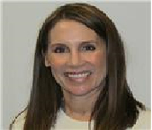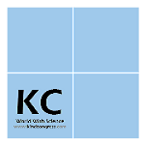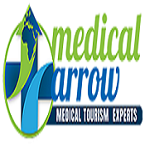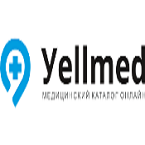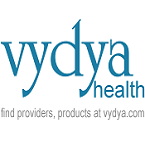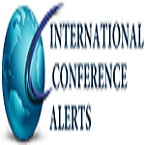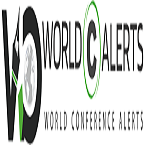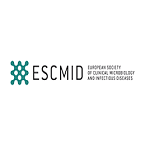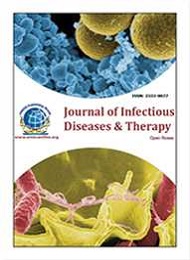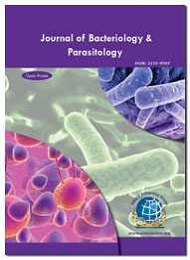Theme: Striving for a New Era by Eradicating Infectious Diseases for Healthy Life
Infection Congress 2023
It is our great pleasure to invite you to take part in the major event 10th International Congress on Infectious Diseases which is mainly focusing on "Striving for a New Era by Eradicating Infectious Diseases for Healthy Life" which was scheduled on 22-23 February 2023 at London, UK.
The conference theme also includes the following areas:
Infectious Diseases, Epidemiology of Infectious Diseases, Diagnosis of Infectious Diseases, Infection Prevention, Control and Treatment, Emerging and Re-Emerging Infectious Diseases, Antimicrobial Agents, STD and Contact Diseases, Bacterial Infectious Diseases, Fungal Infectious Diseases, Neglected & Tropical Infectious Diseases, Parasitic Infectious Diseases, Viral Infections, Recent Outbreaks and their Control, Pediatric Infectious Diseases, Food and Water Borne Infections, Pulmonary and Chest Infections, Dental and Oral Infectious Diseases
4 GOOD REASONS TO ATTEND THIS CONFERENCE
- It’s a platform for presenting your up-to-date research
- Communication among associates
- Latest science and developments
- Fresh way of knowledge transfer
Young Research’s Awards at Infection Congress 2023 for the Nomination:
Young Researcher Forum - Outstanding Masters/Ph.D./Post Doctorate thesis work Presentation and only 25 presentations acceptable at the Infection Congress 2023 .
YRF Registration Benefits:
- Young Scientist Award recongination certificate and memento to the winners
- Infection Congress 2023 provides best Platform for your research through oral presentations.
- Learn about career improvement with all the latest technologies by networking.
- Provide an opportunity for research interaction and established senior investigators across the globe in the fields of Infectious Diseases.
- It’s a great privilege for young researchers to learn about the research areas for expanding their research knowledge.
Who to attend the conference?
Target Audience
- Microbiologists
- Bacteriologists
- Virologists
- Parasitologists
- Mycologists
- Pathologists
- Pharmacists
- Epidemiologists
- Business Entrepreneurs
- Health Care Associations & Societies
- Health Care Professionals
- Researchers Fellowship and YOU!!
Session 1: Infectious Diseases
Infectious diseases are disorders caused by organisms like bacterium, viruses, fungi or parasites. Several organisms sleep in and on our bodies. They are unremarkably harmless or may be useful, however below sure conditions, some organisms might cause illness. Some infectious diseases are passed from person to person. Some are transmitted by bites from insects or animals. And others are non-inheritable by ingesting contaminated food or water or being exposed to organisms within the surroundings. Signs and symptoms vary looking on the organism inflicting the infection; however usually embody fever and fatigue. Delicate infections might reply to rest and residential remedies, whereas some serious infections might need hospitalization. Several infectious diseases, like contagious disease and varicella, is prevented by vaccines. Frequent and thorough hand-washing additionally helps defend you from most infectious diseases.
Session 2: Epidemiology of Infectious Diseases
The medicine of communicable diseases involves study of the prevalence, incidence and determinants of infections in populations. Infectious diseases stay one amongst the foremost necessary causes of morbidity and mortality round the world. Additionally to finding out the rates of and risk factors for communicable disease, ID epidemiologists implement and measure interventions at the individual and community level to: forestall infection (primary prevention) and, among those with infections, to forestall development of malady (secondary prevention) or disease-associated death and incapacity (tertiary prevention).
Session 3: Diagnosis of Infectious Diseases
The diagnosing of a microbial infection begins with associate assessment of clinical and medical specialty options, resulting in the formulation of a diagnostic hypothesis. Anatomic localization of the infection with the help of physical and radiologic is typically enclosed. This clinical diagnosing suggests variety of doable etiologic agents supported data of infectious syndromes and their courses. A mixture of science and art on the part of each the practical and laboratory employee is required. The lab technician should choose the acceptable tests and specimens to be processed and, wherever acceptable, counsel the suspected etiologic agents to the laboratory. The laboratory employee should use the ways that may demonstrate the probable agents and be ready to explore alternative potentialities recommended by the clinical scenario or by the findings of the laboratory examinations. The simplest results square measure obtained once communication between the practical and laboratory is outside.
Session 4: Infection Prevention, Control and Treatment
The transmission of communicable diseases altogether health care aspects is needed for infection interference and management. Some interference should be followed like sanitation, hand laundry; food and water safety and vaccination for infection interference and management to decrease unfold of microorganisms and diseases. Antimicrobial agents also are wont to stop infections caused by animals.
Session 5: Emerging and Re-Emerging Infectious Diseases
The recently recognized and earlier unknown infections that cause public health issues either regionally or globally are raising infectious diseases. Infections showing upward trends in frequency or prevalence worldwide have appeared in areas wherever they're not earlier found. Infectious that's familiar earlier, had fallen to low levels that they were not recognized public health issues. Re-emergence of agents whose incidence of malady had considerably declined within the past; however, whose incidence of malady has reappeared. This category of diseases is thought as re-emerging infectious diseases.
Session 6: Antimicrobial Agents
Antimicrobial agents square measure any substances that kill or slow the expansion of microbes. These substances are derived from present substances. They square measure the extremely regulated within the u. s. and lots of different countries to confirm that the merchandise and solutions that utilize them are safe for customers and for the atmosphere and ultimately give price to the customers. Some normally used antimicrobial agents embrace silver, copper, and different metals. Metal pyrithione is additionally utilized in paints, textiles and chemical compound merchandise to inhibit the expansion of microorganism and fungi on prone surfaces.
Session 7: STD and Contact Diseases
Infections that are passed from one person to a different through sexual contact are thought as STDs (Sexually Transmitted Diseases). Bacteria, parasites, yeast and viruses square measure the causes of sexually transmitted diseases, there square measure over twenty kinds of STDs example VD, gonorrhoea, HIV/AIDS, Cupid's itch and protozoa infection etc. STDs have an effect on each men and girls, however in several cases health issues square measure severe for girls. STDs caused by bacterium, yeast or parasites will be treated by antibiotics, there's no cure for STDs caused by virus however medicines will facilitate in hindrance and management. Individuals between the ages of fifteen and twenty-four years acquire 1/2 all new STDs, associate degreed one in four sexually active adolescent females has an STD. However, STD rates among seniors square measure increasing.
Session 8: Bacterial Infectious Diseases
A bacterial microorganism infection could be a proliferation of a harmful strain of bacterium on or within the body. Bacterium will infect any space of the body. Pneumonia, meningitis, and sickness square measure simply some sicknesses which will be caused by harmful bacterium. Bacteria are available 3 basic shapes: rod-shaped (bacilli), spherical (cocci), or volute (spirilla). Bacterium may additionally be classified as gram-positive or gram-negative. Gram-positive bacteria have a thick semipermeable membrane whereas gram-negative bacteria don't. Gram staining, microorganism culture with antibiotic sensitivity determination, and different tests square measure want to determine microorganism strains and facilitate confirm the suitable course of treatment.
Session 9: Fungal Infectious Diseases
Fungal infections are common throughout abundant of the nature. In humans, plant infections occur once and offensive plant life takes over a neighbourhood of the body and is simply too abundant for the system to handle. Fungi will board the air, soil, water, and plants. There also are some fungi that live naturally within the physical body. Like several microbes, there are useful fungi and harmful fungi. Once harmful fungi invade the body, they will be troublesome to kill, as they will survive within the atmosphere and re-infect the person making an attempt to induce higher.
.Session 10: Neglected & Tropical Infectious Diseases
Neglected tropical diseases (NTDs) – a various cluster of communicable diseases that prevail in tropical and sub-tropic conditions they're caused by a spread of pathogens like viruses, bacteria, protozoa and helminths. Over one billion folk’s globally square measure suffering from these neglected tropical diseases the cluster of parasitic and microorganism diseases causes substantial wellness. As per the reports from World Health Organization (WHO), the main diseases of concern square measure protozoa infection, that affects over one third of the world’s population.
Session 11: Parasitic Infectious Diseases
Parasitic infections are caused because of protozoa and helminths are answerable for substantial morbidity and mortality worldwide. They're life in Central and South America, Africa, and Asia. They're abundant less common in Australia, Canada, Europe, Japan, New Island, and the US. By far, the best impact is on residents of impoverished tropical areas with poor sanitation, however parasitic infections are encountered in developed countries among immigrants and travellers coming back from endemic regions and, infrequently, even among residents UN agency haven't travelled, notably those with AIDS or different conditions that cause immunological disorder.
Session 12: Viral Infections
An acute virus infection is characterized by speedy onset of malady, a comparatively transient amount of symptoms, and backbone inside days. It's typically amid early production of infectious virions and elimination of infection by the host system. Acute infectious agent infections square measure usually ascertained with pathogens like contagion virus and picornavirus. Viral haemorrhagic fever virus infection is associate degree acute virus infection, though the course of malady is unto severe.
Session 13: Recent Outbreaks and their Control
Outbreaks of preventable infectious diseases are tough to keep up. Despite the introduction of vaccines several decades past, many of us grasp the prominence of obtaining immunized so as to avoid the preventable infectious diseases. Vaccines are rock bottom, extremely effective and accessible for everybody. But outbreaks happen all the time.
Session 14: Pediatric Infectious Diseases
If a child is suffering with periodic or persistent diseases caused by any infectious agents like microorganism, fungi, parasite or the other rare infection it is called as the pediatric infectious diseases. Children with non-heritable or inheritable disorders of system infections and treated by division of medicine infectious diseases and supply steerage on travel protection.
Session 15: Food and Water Borne Infections
Consuming contaminated foods or beverages causes foodborne diseases. The start of symptoms might occur inside minutes to weeks and often occur as flu-like symptoms. Symptoms of infected person area unit nausea, vomiting, diarrhea or fever because the symptoms area unit flu-like many of us might not acknowledge that the illness is caused by microorganism or different microorganism in food. Foodborne malady will be prevented by correct preparation or by process the food to kill the pathogens.
Session 16: Pulmonary and Chest Infections
Infection of the lungs or airways is understood as chest infection. The most forms of chest infection square measure respiratory disorder and respiratory disorder. Most viruses cause increase in respiratory disorder, whereas most bacterium cause increase in development of respiratory disorder. Once associate in nursing infected person coughs or sneezes infections square measures sometimes unfold. Virus or bacterium fluid droplets into the air, wherever they'll be inhaled in by others cause infections.
Session 17: Dental and Oral Infectious Diseases
The micro-organism contamination/infection that happens within the mouth at the doorway of nourishing track referred to as Oral Infectious Diseases. Oral infections constitute most typical and expensive kinds of infections that happen within the rims and external body part locus, that for the foremost half incorporate caries, dental mash and periodical ailments, periodontics diseases, external body part odontogenic and non-odontogenic contaminations, oral tissue layer diseases, and peri-embed irritation. Periodontics infections are the foremost well-known infectious diseases of adult.
Recommended Conferences:
Waterborne Diseases Conferences | Infectious Diseases Conferences Europe | Serology Conferences | Viral Disease Conferences | Epidemiology Conferences | Infection Control Conferences | Parasitic Diseases Conferences | Fungal Diseases Conferences | Infection Conferences | Infection Prevention Conferences | Infection Control Conferences | Bacterial Conferences | Viral Diseases Conferences | Infectious Diseases Conferences | Infectious Diseases Conferences | Infectious Diseases Conferences USA | Infectious Diseases Conferences Asia
33rd European Pediatrics Conference September 05-06, 2022 Berlin, Germany; 5th International Conference on Advances in Neonatal and Pediatric Nutrition September 22-23, 2022 Rome, Italy; 32nd International Congress on Vision Science and Eye September 26-27, 2022 Rome, Italy; 8th International Conference and Exhibition on Satellite & Space Missions September 28-29, 2022 Paris, France; 13th International Conference on Emerging Infectious Diseases October 17-18, 2022 Barcelona, Spain; 16th International Conference on Alzheimers Disease & Dementia October 19-20, 2022 Barcelona, Spain; 12th International Conference on Geriatrics, Gerontology & Elderly Care November 07-08, 2022 Rome, Italy; 35th World Congress on Advance Nursing Practice November 14-15, 2022 Barcelona, Spain; 9th International Conference on Pediatric Cardiology December 05-06, 2022 Rome, Italy.
Related Societies and Associations:
Europe: Spanish Society of Infectious Diseases, Spain; Spanish Society of Clinical immunology and Allergy, Spain; British Society for Immunology, UK; European Society for Immunodeficiency’s, Switzerland; European Society of Clinical Microbiology and Infectious Diseases, Switzerland; British Society for Antimicrobial Chemotherapy, UK; Society for General Microbiology, UK
USA: Infectious Disease Association of California, USA; Infectious Diseases Society of America, USA, The Association for Professionals in Infection Control and Epidemiology, Inc, USA.
Asia Pacific: Infectious Diseases Association of Thailand, Thailand; Paediatric Infectious Diseases Society for Thailand, Thailand; The Swiss Society for Infectious Diseases, Switzerland, Society of Infectious Disease, Singapore, New South Wales Infection Control Association, Australia.
Infections are caused by microorganisms resides inside the host body. The colonization of microbes is beneficial and sometimes fatal, vary according to the host immune resistance and drug susceptibility. In general biologist classified living organisms which are called as bacteria, virus, protozoa, fungi, Parasites, Prions, Viroid’s (plant pathogens, they affect the health of plants). The overlap of the kingdoms in this figure is intentional, because, given the evolution of increasingly complex and diverse species.
Human with infection causing agent inside the body called host and organisms as parasite. These tiny microbes colonize inside the body and reproduce. The organism that causes infection is also called as infectious agent. The resided organism that harms a host's health is often called a pathogen. The infection can be varied to different stages in accordance to various types of infectious agents that establishes successful site of infection in the host cause disease. Infectious agents come in many shapes and sizes. The single celled microscopic organisms are called Bacteria and protozoa, while viruses are even smaller. Fungi grow like plants and helminths that resemble worms.
The death rate of people is more due to infectious diseases than any other single cause. Infectious diseases are caused by microbes. Microbes are tiny living organisms which are ubiquitous and are omnipresent- in air, soil and water. The mode of transmission of infection varies different ways by touching, eating, drinking or breathing something that contains a germ, spread through animal, insect bites, and sexual contact.
The global market for infectious disease treatments totaled $64.8 billion in 2017. The market should total $99 billion by 2022, growing at a compound annual growth rate (CAGR) of 8.9% from 2017 to 2022.
The global infectious disease diagnostics market is expected to reach USD 25.43 billion by 2027 from USD 15.57 billion in 2018, at a CAGR of 5.6%. The increasing global prevalence of infectious diseases, the shift in focus from centralized laboratories to decentralized point-of-care testing, and growth in funding for research on infectious disease diagnostics are some the factors driving the growth of this market.
The global prevalence of infectious diseases such as influenza, HPV, hepatitis, HIV, and tuberculosis are considerably high in spite of significant improvements in sanitation practices and medicine. Many of the currently available diagnostic techniques are slow, involve complex procedures, and lack specific identification of causative agents. Owing to this, patients receive empiric, broad-spectrum antimicrobial therapy rather than appropriate therapies. This has resulted in the emergence of super-resistant microbes
On the basis of technology, the market is broadly segmented into immunodiagnostics, clinical microbiology, PCR, INAAT, DNA sequencing & NGS, DNA microarrays, and others. The immunodiagnostics segment accounted for the largest share of the global infectious disease diagnostics market in 2018. This dominant share is attributed to the increasing use of immunoassays in POC infectious disease testing, development of novel tests, rising trend of automation, and increasing awareness about health and fitness. On the basis disease type, the market is broadly segmented into hepatitis, HIV, HAIs, CT/NG, HPV, TB, Influenza and others. The hepatitis diagnostics segment accounted for the largest share of the global infectious disease diagnostics market in 2018 and HAIs diagnostics segment is expected to witness the highest CAGR during the forecast period. The growth of HAIs diagnostics is attributed to factors such as the rising burden of MRSA infections; increasing number of new products launched in the market; and increasing adoption of technologically advanced HAI diagnostic tests such as BD MAX Cdiff assays, Xpert MRSA NxG, and ARIES C. difficile assays that are based on the PCR technology.
In 2018, North America accounted for the largest share of the global infectious disease diagnostics market. This largest share is attributed to the presence of a highly developed healthcare system, increasing prevalence of infectious diseases, the presence of a large number of leading national clinical laboratories, and easy accessibility to technologically advanced instruments in the region.
Conference Highlights
- Infectious Diseases
- Epidemiology of Infectious Diseases
- Diagnosis of Infectious Diseases
- Infection Prevention, Control and Treatment
- Emerging and Re-Emerging Infectious Diseases
- Antimicrobial Agents
- STD and Contact Diseases
- Bacterial Infectious Diseases
- Fungal Infectious Diseases
- Neglected & Tropical Infectious Diseases
- Parasitic Infectious Diseases
- Viral Infections
- Recent Outbreaks and their Control
- Pediatric Infectious Diseases
- Food and Water Borne Infections
- Pulmonary and Chest Infections
- Dental and Oral Infectious Diseases
To share your views and research, please click here to register for the Conference.
To Collaborate Scientific Professionals around the World
| Conference Date | February 22-23, 2023 | ||
| Sponsors & Exhibitors |
|
||
| Speaker Opportunity Closed | Day 1 | ||
| Poster Opportunity Closed | Click Here to View | ||
Useful Links
Special Issues
All accepted abstracts will be published in respective Our International Journals.
- Journal of Infectious Diseases and Therapy
- Journal of Air and Water Borne Diseases
- Journal of Bacteriology and Parasitology
Abstracts will be provided with Digital Object Identifier by






